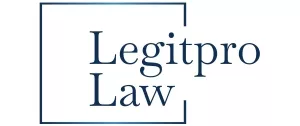- within Corporate/Commercial Law topic(s)
- with readers working within the Utilities and Law Firm industries
- within Corporate/Commercial Law, Employment and HR and Tax topic(s)
- with Senior Company Executives, HR and Finance and Tax Executives
- in Middle East
Introduction
The Ministry of Corporate Affairs (MCA) has recently announced the Companies (Compromises, Arrangements and Amalgamations) Amendment Rules, 2025 ("Amendment"), signifying yet another advancement in alleviating the workload of the National Company Law Tribunals (NCLTs) while establishing a more business-friendly framework for restructuring. The Amendment brings about procedural enhancements and broadens the range of companies that can utilize the fast-track merger (FTM) mechanism, thereby allowing a wider segment of the corporate sector to reap its benefits.
The FTM pathway, established under Section 233 of the Companies Act, 2013, was crafted to streamline the approval process for mergers by transferring jurisdiction to the Regional Directors of the transferee company, as opposed to necessitating petitions before the NCLTs in cases where both transferor and transferee companies are situated. This framework was intended to ease the burden on NCLTs through a more efficient process and a presumed 60-day completion timeline, rendering it a faster and more economical alternative to conventional merger procedures.
Extended Classes under Fast-Track Route
Section 233 of the Companies Act, 2013, along with Rule 25 of the CAA Rules, 2016, currently permits certain categories of companies to engage in mergers using a fast-track procedure. These categories encompass: (i) two or more small companies; (ii) a holding company along with its wholly-owned subsidiary; (iii) two or more start-up companies; or (iv) one or more start-up companies merging with one or more small companies.
Often called the "RD Route" the fast-track merger (FTM) framework eliminates the necessity for NCLT approval. Instead, the process is finalized through confirmations and approvals from the Registrar of Companies (RoC), the Official Liquidator (OL), and members and creditors possessing at least 90% in value, followed by an approval order issued by the Regional Director (RD) who has jurisdiction.
The primary amendment broadens the scope of the RD route to include the following categories of companies: -
- Arrangements between a holding company (whether publicly traded
or privately held) and its subsidiary (also publicly traded or
privately held) can be executed through the fast-track process,
regardless of whether the subsidiary is wholly owned. Previously,
the FTM route was confined solely to mergers or demergers involving
a holding company and its wholly-owned subsidiary. With the recent
amendment, this limitation has been removed, allowing mergers or
demergers with any subsidiary, whether listed or unlisted,
alongside its holding company.
Nonetheless, while subsidiaries are permitted to merge with or demerge into their holding companies under the FTM framework, this option is not available if the transferor company is publicly traded. - Another significant change allows schemes of arrangement between unlisted companies via a fast-track route, with specific conditions to be met 30 days prior to inviting regulatory objections under Section 233(1) of the Companies Act, 2013. These conditions are:
-
- No company can be a Section 8 entity;
- Each company's total loans, debentures, and deposits must be below ₹200 crores;
- There should be no repayment defaults.
These conditions must be satisfied twice: firstly, 30 days before inviting objections from regulators under Section 233(1), and again when filing the solvency declaration in Form CAA-10. This declaration requires a certificate from each company's statutory auditor, confirming adherence to the conditions in a new Form CAA-10A, which will be attached to the solvency declarations. There is no need for common shareholding, promoter group, or control among the merging companies, allowing unrelated unlisted companies to pursue fast-track mergers if they meet the financial criteria and other conditions.
- Inter-group restructurings were previously excluded from FTM framework. The amendment now includes arrangements between fellow subsidiaries, provided the transferor companies are unlisted. This restriction only pertains to the transferor, allowing the transferee to be listed. This change effectively expands the FTM scope to include mergers involving fellow and step-down subsidiaries. However, there remains a potential conflict with SEBI's LODR regime. According to Regulation 37 of the SEBI LODR, listed companies must obtain prior stock exchange approval before submitting a scheme of arrangement, except for mergers between a holding company and its wholly-owned subsidiary. Fellow or step-down subsidiaries were previously outside the FTM route, and SEBI clarified that this exemption does not apply to step-down mergers into the ultimate parent, necessitating compliance with Regulation 37. Therefore, while the Companies Act permits fellow and step-down subsidiaries to use the fast-track route, the exemption from SEBI approval may not apply if the transferee is listed. Unless SEBI extends the exemption, listed entities might still need to adhere to the standard approval process under Regulation 37, potentially undermining the efficiency benefits intended by the FTM framework.
- Reverse cross-border mergers involving Indian subsidiaries of foreign firms have been simplified by the Amendment. The Amendment integrates the provisions for mergers between foreign holding companies and their Indian subsidiaries into Rule 25, enhancing clarity and eligibility for the fast-track merger process. However, additional requirements remain, including prior RBI approval and a declaration in Form CAA-16 for companies from nations sharing a land border with India when applying.
Practical Implication and Challenges Ahead
The NCLTs are currently burdened with cases, which often leads to schemes of arrangement receiving insufficient consideration and enduring prolonged delays. The recent amendments represent a constructive move towards streamlining and accelerating the processes of mergers and demergers. However, certain aspects of their implementation may require thorough examination: -
- A Section 233(1) mandates that approval must be obtained from members representing 90% of the total share capital, rather than simply 90% of those who are present and voting, which poses a significant challenge for listed companies to achieve this requirement. This stipulation has resulted in delays and hampers the objective of efficiency associated with the fast-track route. In practice, RDs have adopted varying approaches, some have insisted on strict adherence to the rule, while others have permitted approval from 90% of those present and voting. The latter interpretation has gradually become more widely accepted. The approval requirement for FTMs is more stringent than that of the NCLT route (which necessitates three-fourths in value of members who are present and voting), although this higher standard is frequently justified by the time and cost efficiencies offered by the FTM mechanism.
- In cases where the transferor company or the demerging undertaking owns immovable property, certain practical concerns may arise. Even though RDs serve as administrative extensions of the Government, and their directives are legally acknowledged as equivalent to those of the NCLT, practical challenges may still occur. In particular, when it comes to the transfer of immovable property, local registrars might not consistently acknowledge RD-approved schemes with the same authority as those sanctioned by the NCLT, which could complicate the property registration and mutation process.
- Section 233(5) stipulates that if the RD neither objects nor escalates the issue to the NCLT within a 60-day timeframe, the scheme is considered approved. This introduces practical uncertainties in India. In instances of deemed approval, there is a lack of a formal RD order endorsing the scheme. This engenders confusion regarding whether the scheme, approved by shareholders/creditors, serves as the instrument of transfer, especially in the context of property registration and vesting. The RD is not permitted to outright reject a scheme; if there are concerns, the issue must be escalated to the NCLT. This escalation effectively restarts the process, placing the scheme back into the conventional NCLT pathway, thus eroding the speed and cost advantages associated with the FTM mechanism. Variations in interpretation by authorities, particularly concerning transfers of immovable property, could undermine the intended efficiency benefits of the deemed approval framework.
- A practical dilemma may emerge if an RD, while addressing an amendment application, concludes that the matter necessitates scrutiny by the NCLT. In these instances, the process may transition to the Tribunal, thereby undermining the objective of expedited resolution under the FTM approach. In the absence of a clear position, ambiguity regarding whether amendments should be adjudicated by the RD or the NCLT could engender procedural delays, thereby adversely impacting the intended efficiency of fast-track mergers.
- Although cross-border mergers that adhere to the provisions of the FEMA Regulations, 2018 are considered sanctioned by the RBI, corporations are nonetheless obligated to notify various regulatory bodies. This additional layer of regulatory scrutiny may prolong timelines, as corporations may be necessitated to await feedback or objections from regulatory authorities prior to executing the scheme.
- Expanded FTM eligibility is poised to greatly enhance the workload of RD offices. In contrast to nearly 30 NCLT benches, there are merely 7 RDs, each tasked with overseeing multiple states while already managing issues like the conversion of public companies to private ones, changes to the financial year, and the correction of names. This concentration of duties may lead to administrative delays, and prompt resolution of cases will be crucial to uphold the efficiency advantages of the FTM process.
Conclusion
The Amendments denote a significant improvement in the fast-track merger framework, extending its applicability to subsidiaries beyond WOS, fellow subsidiaries, certain unlisted companies, and cross-border transactions. By implementing financial thresholds, clarifying procedural guidelines, and broadening eligibility criteria, the framework has become more inclusive and conducive to business. Parallelly, practical challenges such as elevated shareholder approval thresholds, overlaps with SEBI regulations, recognition of property transfers, and the limited administrative capabilities of RD offices will require careful consideration. If these issues are effectively tackled, the reforms hold the promise of significantly alleviating the load on NCLTs while providing companies with a swifter, more economical, and efficient option for mergers and demergers.
The content of this article is intended to provide a general guide to the subject matter. Specialist advice should be sought about your specific circumstances.


